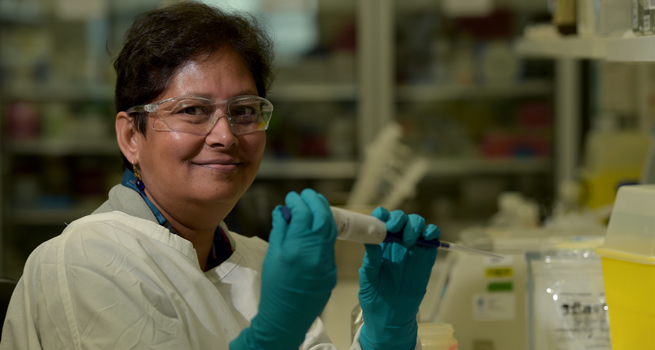09 May 2017
The flu-hunters at the Doherty Institute
This article was first published on Pursuit.
A crack team of international scientists are dedicated to fighting the flu, tracking its many mutations across the globe.
Deep in Melbourne’s Biomedical Precinct, a team of influenza specialists wait in a state of constant readiness, analysing thousands of samples from around the world.
Every year, they’re on the lookout for the next pandemic.
This team of flu-hunters are one of five World Health Organisation Collaborating Centres for Reference and Research on Influenza, tasked with the relentless monitoring of the virus as it changes form; its ability to shape-shift its greatest weapon against our immune systems.
Since the 1950s the WHO has run this global game of catch-up, and now has 143 national influenza centres in 112 countries monitoring the virus, as part of its Global Influenza Surveillance and Response System.
Together, the five reference centres are responsible for developing the annual flu vaccine – the only vaccine updated every year. It is, essentially, a game of detection and informed guesswork, as the international team monitors how the virus is changing each season and updates the next year’s vaccine accordingly.
The centres track everything from the proportion of patients visiting participating GPs with flu-like symptoms (defined as a fever, a cough and one more respiratory symptom), to patients hospitalised with flu, and outbreaks in concentrated areas like retirement homes.
“We get samples from any one of these national centres,” says Professor Kanta Subbarao, who runs the Melbourne centre for the Royal Melbourne Hospital, at the Peter Doherty Institute for Infection and Immunity, a joint venture between The University of Melbourne and RMH. The other four centres are based in the UK, the US, China and Japan.
“We recommend countries send us viruses if there’s anything unusual, as well as representative samples from the season. Right now we’re asking for four shipments a year – we typically receive about 4,000 samples a year.”
The Melbourne centre mainly receives samples from the Asia-Pacific region. The throat and nasal swabs are packaged carefully and shipped on dry ice; they all have the potential to become the next vaccine candidate and must be handled with incredible care.
Read the full story on Pursuit.

Professor Kanta Subbarao is the Director of the Melbourne World Health Organisation Collaborating Centres for Reference and Research on Influenza. Picture: Paul Burston/University of Melbourne


